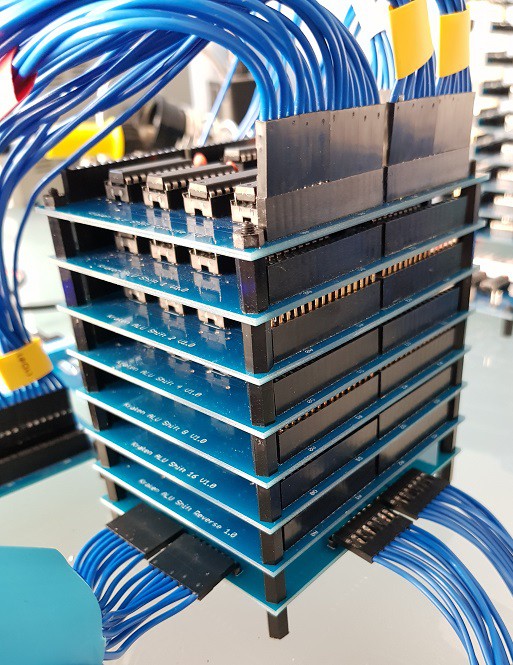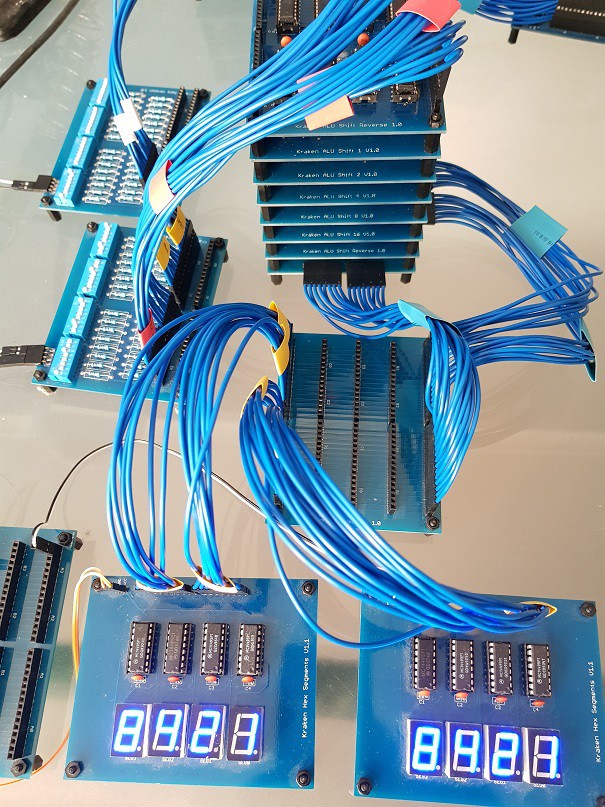The most complex part of our ALU is handling the various shift operations. We need to handle shifting left and right as well as the logical and arithmetic variations. So the design is constructed in the following modular way.
Our 32bit machine allows a shift distance of 0 to 31 places that means we have 5bits describing the shift distance. To implement this we need a single shifter for each of the 5bits. The first shifter looks at bit 0 and if set will output a value that is the input shifted one place left. The second shifter looks at bit 1 and shifts the output 2 places. Bit 3 causes a shift of 4 places, bit 4 shifts 8 places and finally the last shifter moves 16 places left. By flowing the output of the first shifter as the input to the second, and so forth, the final result is shifted the correct distance.
By default we shift left (to higher bit positions) but we also need to handle a right shift as well. We definitely want to avoid creating another 5 level shifter for handling right shifting. Instead, we reverse the input bits before and then again after the shifter.
The SRA and SRAI operations are arithmetic right shift operations, meaning the most significant bit is replicated to the right as the shift occurs. This is useful if you want to shift a negative number and retain it as still being negative afterwards. To support this we use some extra logic for deciding if zero or one is used when filling blank bits during shifting.
Finally we need to use a tristate buffer so that the entire output can be turned off when the ALU wants to ignore the shift output. Our final design consist of the following boards from top to bottom:-
- Reverse
- Shift 1
- Shift 2
- Shift 4
- Shift 8
- Shift 16
- Reverse
- Buffer
The final tower looks like this:-

To test the stack we need a 32bit input, 10 control lines and then be able to examine the 32bit output. Like this:-

Implementing a shift board needs 8 x 74HC241 and the reverse board also uses 8 x '241. We can also make use of the '241 for the buffer board. So I ended up with a total of 56 of them in the stack.
 Phil Wright
Phil Wright
Discussions
Become a Hackaday.io Member
Create an account to leave a comment. Already have an account? Log In.